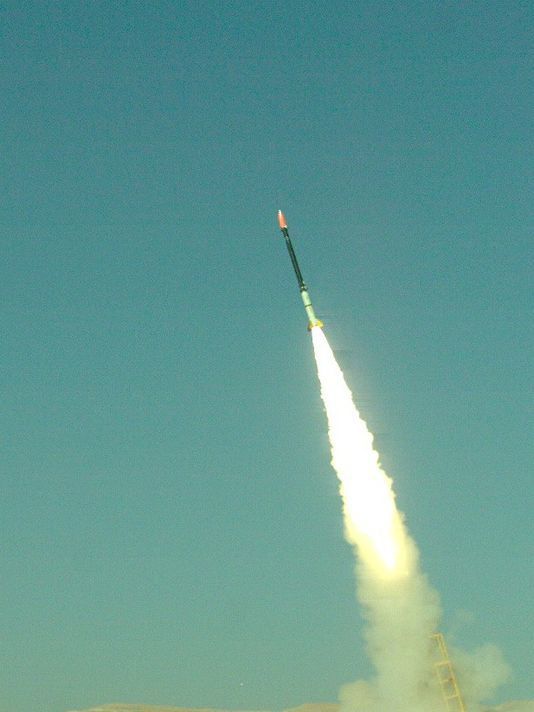TEL AVIV, Israel, Jan. 6 (UPI)
Israel's latest test-firing of its high-altitude Arrow 3 anti-ballistic missile system marks a major step toward the Jewish state's plan to build a multilayer missile defense shield against everything from Iranian intermediate-range ballistic weapons to home-made rockets built by Palestinian militants.
The Arrow, under development by state-run Israel Aerospace Industries and the Boeing Co. of the United States, will be Israel's primary defense against ballistic missiles when it's declared operational. That's currently expected to be some time in 2015.
The system's upgraded missile underwent its second flight test Friday over the eastern Mediterranean although it did not involve an interception, officials reported.
The test took place at the Palmahim air force base on the coast south of Tel Aviv. The two-stage Arrow reached its operational altitude outside Earth's atmosphere where it is designed to shoot down ballistic missiles high enough to disintegrate chemical, biological or nuclear warheads.
Yair Ramati, head of the Israel Missile Defense Organization, said the test, which was attended by U.S. officials, involved the solid-fuel exo-atmosphere interceptor jettisoning its booster rocket.
"The kill vehicle continued to fly in space and conducted various maneuvers ... for a couple of minutes" using thrust vectors, Ramati reported.
The interceptors do not carry explosives, but destroy their targets by ramming them at closing speeds of thousands of feet per second and vaporizing them.
The Arrow 3 system will constitute the topmost tier of the planned Homa -- Hebrew for The Wall -- defense shield and will be dedicated to intercepting ballistic missiles held by Iran, the embattled Syrian regime of President Bashar Assad, and, increasingly, Hezbollah in Lebanon.
U.S. officials are reported to believe Hezbollah, which is backed Tehran and Damascus, is smuggling the components of advanced missile systems into Lebanon from Syria where the systems were delivered by Russia in the last two years to build up their arsenal of long-range weapons capable of hitting anywhere in Israel.
Shipments already in Lebanon are believed to include several supersonic P-800 Yakhont anti-ship missiles. Seventy-two of these weapons were delivered to Syria in 2012-13.
The Yakhont, considered the most advanced missile of its type in the world, "represents a new type of threat," Vice Adm. Eliezer Maron, Israel's former navy commander, warned Sunday, since defense systems to counter such missiles are subsonic.
He said Israel has defenses in place against the sea-skimming Yakhont, but gave no details. The Israelis say their offshore natural gas fields likely would be a prime target for the Yakhont.
The 33-month-old civil war in Syria has raised questions about Assad's control over his military's Russian Scud B and C ballistic missiles. Israel estimates the regime, which is decommissioning its chemical weapons, has used about half of its several dozen Scuds against rebel forces.
Arrow 3, which underwent its first flight test Feb. 25, 2012, is the latest variant of the system IAI, flagship of Israel's defense industry, which has been developing it with the Americans since 1988 at a cost well in excess of $1 billion.
Arrow 1 was first deployed in 2000. Arrow 2, with at least two batteries operational, will back up Arrow 3 at lower altitudes when the new variant becomes operational, picking off any ballistic missiles that get through the first line of defense in space.
The next tier down in the missile shield is the David's Sling system defense under development by Rafael Advanced Defense Systems and the U.S. Raytheon Co. to counter medium-range missiles and rockets.
The bottom layer is Rafael's upgraded Iron Dome system, primarily designed to intercept short-range rockets.
It was deployed in early 2012 and the Israeli military boasts it has destroyed 84.6 percent of the targets it engaged in clashes with Palestinian militants.
That claim has been questioned by some Israeli missile experts, who say it has been highly inflated to boost the morale of Israelis who have been repeatedly warned they face the prospects of sustained weeks-long missile bombardment by their adversaries if a new war breaks out.
This has fueled concerns the multi-tier defense system might not be able to cope with a major missile attack on all fronts, which single-interception trials cannot simulate.









